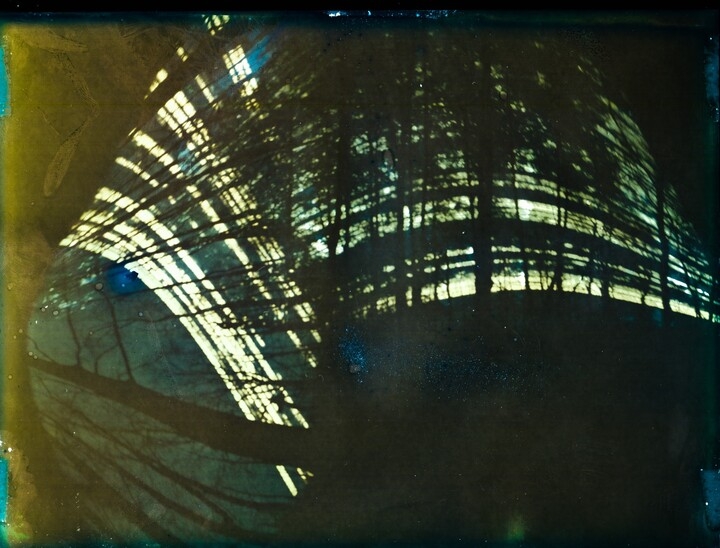Within their creative collaboration, artists Kristians Brekte and Modris Svilāns study various phenomena of human life, reflecting on them in the form of spatial objects, sound and light scenography, as well as analog photography. For more than five years, both artists have been engaged in solargraphy, documenting Latvia’s ancient sacral architecture and burial sites. Their interest in the abandoned, deviant and darker sides of life has turned the artists into researchers of a place, in which photographic experiments with the environment are both part of an observation and a kind of conclusion. Through their long-term cooperation, Brekte and Svilāns have created a psychologically disturbing unifying artistic aesthetic.
The artists themselves define solargraphy as “the principle of an image being burned into the frame by the sun’s rays”. In reality, such an image hints at much more – it is not just a fixation of a moment or a place, but a visual capture of an environment and time. Kristians Brekte and Modris Svilāns have traveled around Latvia with homemade pinhole cameras, hiding the cameras near abandoned churches and cemeteries; places whose existence has long been forgotten. As artists, they focus on the form, composition, and process of image formation, while as researchers, they return to the forgotten space of the present, recording monuments to life that have been neglected.




